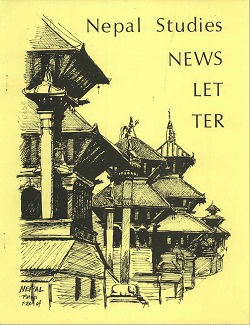Author Biography
Andrew Alter (PhD, Ethnomusicology, Monash University, Melbourne, 2001) is Senior Lecturer in Contemporary Music Studies at Macquarie University in Sydney. He teaches and undertakes research in a diverse range of sub-disciplines, including popular music studies, ethnomusicology and music theory. His primary research is focused on traditional and popular music in India and Indonesia as well as World Music practice in Australia. His performance interests span an eclectic mix of world music and experimental genres, and include diverse musical practice on piano and cello as well as within vocal ensembles and Indonesian gamelan. Andrew has published widely in the discipline’s leading journals and reference tools. He is the author of two books: Dancing with Devtās: Drums, Power and Possession in the Music of Garhwal, North India (2008, Ashgate) and Mountainous Sound Spaces: Listening to History and Music in the Uttarakhand Himalayas (2014, Cambridge India).
Abstract
Connections between particular sounds and geographically conceived places/spaces seems to be a recurrent part of many repertoires in different parts of the Himalaya. A number of examples exist in which ritual repertoires are linked to pilgrimage pathways, to specific spiritual sites or to an ordering of space in relation to geomorphic realities. In the North Indian region of Garhwal, these connections are most directly made within wedding processions in which particular repertoire items are mapped against particular landscapes and pathways. In other repertoire items, specific motivic devices are used in more subtle ways to enhance the spatial experience of performers and listeners. In popular music idioms, connections between sounds and geomorphically imagined spaces are achieved in ways that borrow from traditional repertoire but also expand the symbolic use of sound through studio enhancement. In conjunction with more obvious regional identifiers such as language, rituals, deities and costumes, sounds help construct a shared regional identity amongst listeners that is associated with the physical reality of mountains. This paper examines a selection of popular music songs from Garhwali cassettes from the 1980s, 90s and early 2000s and notes a number of consistent uses of particular sounds that prompt a spatial experience associated with a mountainous landscape.
Acknowledgements
The author would like to thank Dr. D.R. Purohit for his help with some of the song title translations shown above. He would also like to thank the two anonymous reviewers who provided valuable feedback on the article. Finally, he would like to acknowledge the assistance provided by Macquarie University in providing research funding to complete aspects of this project.
Creative Commons License

This work is licensed under a Creative Commons Attribution-Noncommercial-No Derivative Works 4.0 License.
Recommended Citation
Alter, Andrew B.. 2018. Encoding Spatial Experience in Garhwali Popular Music Cassettes. HIMALAYA 38(1).
Available at:
https://digitalcommons.macalester.edu/himalaya/vol38/iss1/12


